A collection of videos relating to the diagnosis and treatment of eye movement disorders. This collection includes many demonstrations of examination techniques.
Dan Gold, D.O., Associate Professor of Neurology, Ophthalmology, Neurosurgery, Otolaryngology - Head & Neck Surgery, Emergency Medicine, and Medicine, The Johns Hopkins School of Medicine.
A collection of videos relating to the diagnosis and treatment of eye movement disorders.
NOVEL: https://novel.utah.edu/
TO
| Title | Description | Type | ||
|---|---|---|---|---|
| 151 |
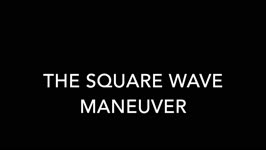 |
Square Wave Maneuver for Apogeotropic Horizontal Canal BPPV (Video) | The square wave maneuver is designed to treat individuals with horizontal canal cupulolithaisis and is commonly used when individuals have cervical restrictions and the affected side is not well identified at baseline. 1. The patient begins in the supine position with the head 20 to 30 degrees above... | Image/MovingImage |
| 152 |
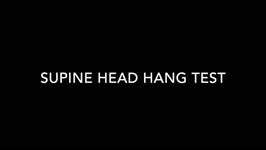 |
Supine Head-Hanging Test (Video) | The supine head-hanging test is more sensitive for AC-BPPV, but it does not differentiate laterality, as both canals are stimulated at the same time [1-3]. When the individual returns to a seated position, the otoconia should hypothetically move closer to the utricle, which continues their ampullofu... | Image/MovingImage |
| 153 |
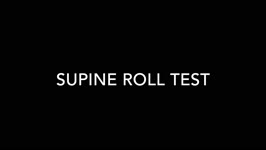 |
Supine Roll Test/Pagnini-McClure Test (Video) | The supine roll test or the Pagnini-McClure Test is used to assess for horizontal canal benign paroxysmal positional vertigo. A test is positive when a patient reports vertigo, dizziness, or sensation of movement or falling with nystagmus present. Apogetropic nystagmus is indicative of cupulolithias... | Image/MovingImage |
| 154 |
 |
Test of Latency (Video) | The Test of Latency is used to identify which side is involved for patients with horizontal canal BPPV and is used in conjunction with the Supine Roll Test. For canalithiasis, lateralization is considered the side with a shorter latency time. For cupulolithasis, lateralization is considered the side... | Image/MovingImage |
| 155 |
 |
Zuma Maneuver for Right Horizontal Canal Cupulolithiasis (Apogeotropic Nystagmus) (Video) | The Zuma Maneuver is used to treat horizontal canal cupulolithiasis (apogeotropic nystagmus). 1. The patient begins in a seated position. 2. The patient transitions quickly to lying position on their affected side, with their head in neutral, and maintains this position for three minutes. 3. The pat... | Image/MovingImage |
| 156 |
 |
Yacovino Maneuver or the Deep Head Hanging Maneuver for AC-BPPV (Video) | The Yacovino maneuver is used to treat anterior canal benign paroxysmal positional vertigo (AC-BPPV) and does not require the clinician to distinguish which side is involved. Additionally, when the patient completes cervical flexion, the motion may cause otoconial debris to enter the posterior semic... | Image/MovingImage |
| 157 |
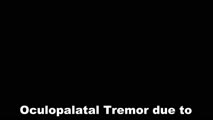 |
Oculopalatal Tremor with Prominent Nystagmus, Bilateral Horizontal Gaze Palsy, and Bilateral Facial Palsies | 𝗢𝗿𝗶𝗴𝗶𝗻𝗮𝗹 𝗗𝗲𝘀𝗰𝗿𝗶𝗽𝘁𝗶𝗼𝗻: This is a 50-year-old woman who experienced the acute onset of right sixth and seventh nerve palsies and left hemiparesis. Two cavernomas within the right pons (one in the region of the facial colliculus) were demonstrat... | Image/MovingImage |
| 158 |
 |
Wallenberg Syndrome in MS | 𝗢𝗿𝗶𝗴𝗶𝗻𝗮𝗹 𝗗𝗲𝘀𝗰𝗿𝗶𝗽𝘁𝗶𝗼𝗻: 30-yo-woman with MS presenting with acute vertigo and vertical diplopia. Examination demonstrated several aspects of the Wallenberg syndrome (her acute demyelinating lesion was in the left lateral medulla): ipsilesional (... | Image/MovingImage |
| 159 |
 |
Oculopalatal Tremor and One-and-a-Half Syndrome Due to Pontine Hemorrhage | 𝗢𝗿𝗶𝗴𝗶𝗻𝗮𝗹 𝗗𝗲𝘀𝗰𝗿𝗶𝗽𝘁𝗶𝗼𝗻: This is a 65-year-old man who was put on a blood thinner, and shortly thereafter experienced a midline pontine hemorrhage, which was more dense on the left side. Immediately afterwards, right hemiparesis and hemi-anesthes... | Image/MovingImage |
| 160 |
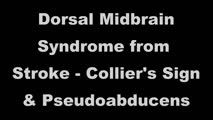 |
Dorsal Midbrain Syndrome from Stroke - Collier's Sign & Pseudoabducens | This is a 70-yo-man who suffered a right midline thalamic/rostral midbrain hemorrhagic stroke causing a pretectal (Parinaud's) syndrome. There was prominent eyelid retraction (Collier's sign), a left pseudo-abducens, and upgaze palsy with convergence retraction nystagmus. There was no light-near dis... | Image/MovingImage |
